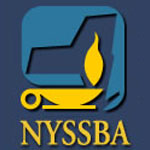Did the property tax cap work in yesterday’s school vote?
 The New York State School Board Association just issued a press release reporting that roughly 93% of the school districts in New York state stayed within the tax cap approved by the state legislature.
The New York State School Board Association just issued a press release reporting that roughly 93% of the school districts in New York state stayed within the tax cap approved by the state legislature.
Of the 7% or so of schools that exceeded the cap, roughly 60% were approved by voters with a super majority. (Full press release below.)
So what do you think? Is this system working, imposing needed discipline on school districts and their boards of education?
Or does this vote reflect a financial squeeze on districts that will hurt education quality? A little of both? Comments welcome.
New York State voters approved 96.4 percent of school district budgets on Tuesday, May 15, according to an analysis by the New York State School Boards Association.
“Today’s results are a ringing endorsement by voters of their public schools and place an exclamation point on the fact that local school governance works,” said NYSSBA Executive Director Timothy G. Kremer.
Initial statewide results gathered by NYSSBA indicate voters have passed 651 of 675 school district budgets. The number of budgets defeated was 24.
This is the first year school districts have had to contend with a property tax cap. Six hundred twenty-three districts, or 92.8 percent, were at or below their maximum allowable tax levy increases under the cap, and required a simple majority to pass their budgets. Of those districts, 99.2 percent passed.
Forty-eight districts, or 7.2 percent, had budgets that exceeded the tax cap and required a 60 percent “supermajority” to pass. Of those districts, 60.4 percent passed their budgets.
Last year, taxpayers approved 93 percent of school district budgets. The average passage rate since 1969 is 84 percent. The average passage rate for the last five years leading up to this year’s vote is 94 percent.
“The voting public has once again shown its strong support for education. Voters recognized that school leaders did everything they could to comply with the spirit and intent of the property tax levy cap,” said Kremer. “They were responsive to their communities.”
“But keeping within the tax cap required sacrifices,” he said, adding that 99 percent of districts needed to use reserve funds to make ends meet. A majority of districts also cut teaching and non-teaching positions as well as programs and services.
The average statewide tax levy increase of 2.3 percent for 2012-13 is more than a full percentage point below the average of 3.4 percent in 2011-12.
The average proposed spending increase for the 2012-13 school year is 1.5 percent, compared to 1.3 percent in 2011-12, 1.4 percent in 2010-11, 2.3 percent in 2009-10, 5.3 percent in 2008-09, and 6.1 percent in 2007-08.
Kremer cautioned that with dwindling reserve funds, districts are going to need significant mandate relief from the state. While linking state aid to personal income growth sounds reasonable, he said, “we have to recognize that the cost of doing business in New York is simply higher than other states and that has repercussions for school districts. Moreover, outdated state laws such as the Triborough Amendment make it difficult for school districts to get long-term concessions.”
In school districts where the budget failed to pass, a second vote may be held on June 19. School boards may forgo a second vote and adopt a contingency budget. Under state law, a contingency budget requires zero percent growth in the district’s tax levy.
On Tuesday, voters also filled vacancies on their local school boards and voted on separate propositions to fund such needs as school construction or bus purchases.
“Congratulations to all of the newly elected school board members,” said Kremer. “Serving on a school board is one of the most significant and honorable ways to contribute in a local community.”
-30-
About NYSSBA: The New York State School Boards Association represents more than 650 school boards and more than 5,000 school board members in New York. NYSSBA provides advocacy, training, and information to school boards in support of their mission to govern the state’s public schools.








The only district in my area where the budget was defeated was Stillwater. It actually got a majority vote but did not get the supermajority needed. The proposed budget actually CUT spending, but the overall tax levy (not tax rate) was up by 3% because of the increased tax revenue from Global Foundries. Bravo Gov. One Percent!
And if I may speak generally, the tax cap idea is ridiculous. School budgets are the ONLY taxes in NYS that citizens get to vote on directly. It is the most democratic tax of them all. Or at least it was, until Gov. One Percent pushed this anti-democratic, supermajority b.s.
I think the voters realize school boards and local governments are hamstrung by unfunded mandates and state legislators (plus the SED) who just love cramming “great ideas” down everyone’s throat but have no intention of helping to pay for them.
I wonder how many mandates are the result of campaign contributions by companies and organizations that want to force schools and local governments to buy their products and/or services?
Originally I was opposed to it, but after the recent vote I see it as a step in the right direction. Voters will begin to realize the importance of getting involved in the process and voting. School districts will need to find that balance between taxes and programs. Unfunded mandates still need to be addressed.
The tax cap without mandate relief was always going to be a disaster. But Gov. One Percent and the craven legislators were more interested in taking credit than solving problems. All they did was shift the problem down to school districts, counties and municipalities, without giving them any relief from STATE IMPOSED mandates. Cowards!